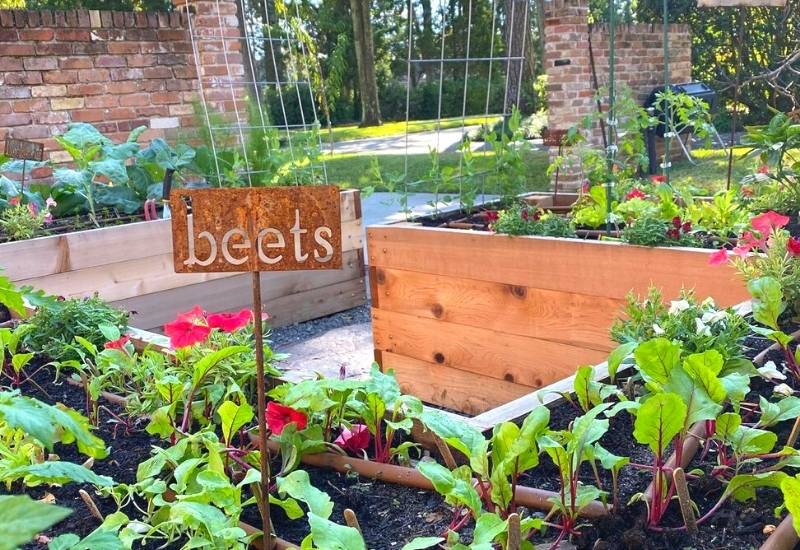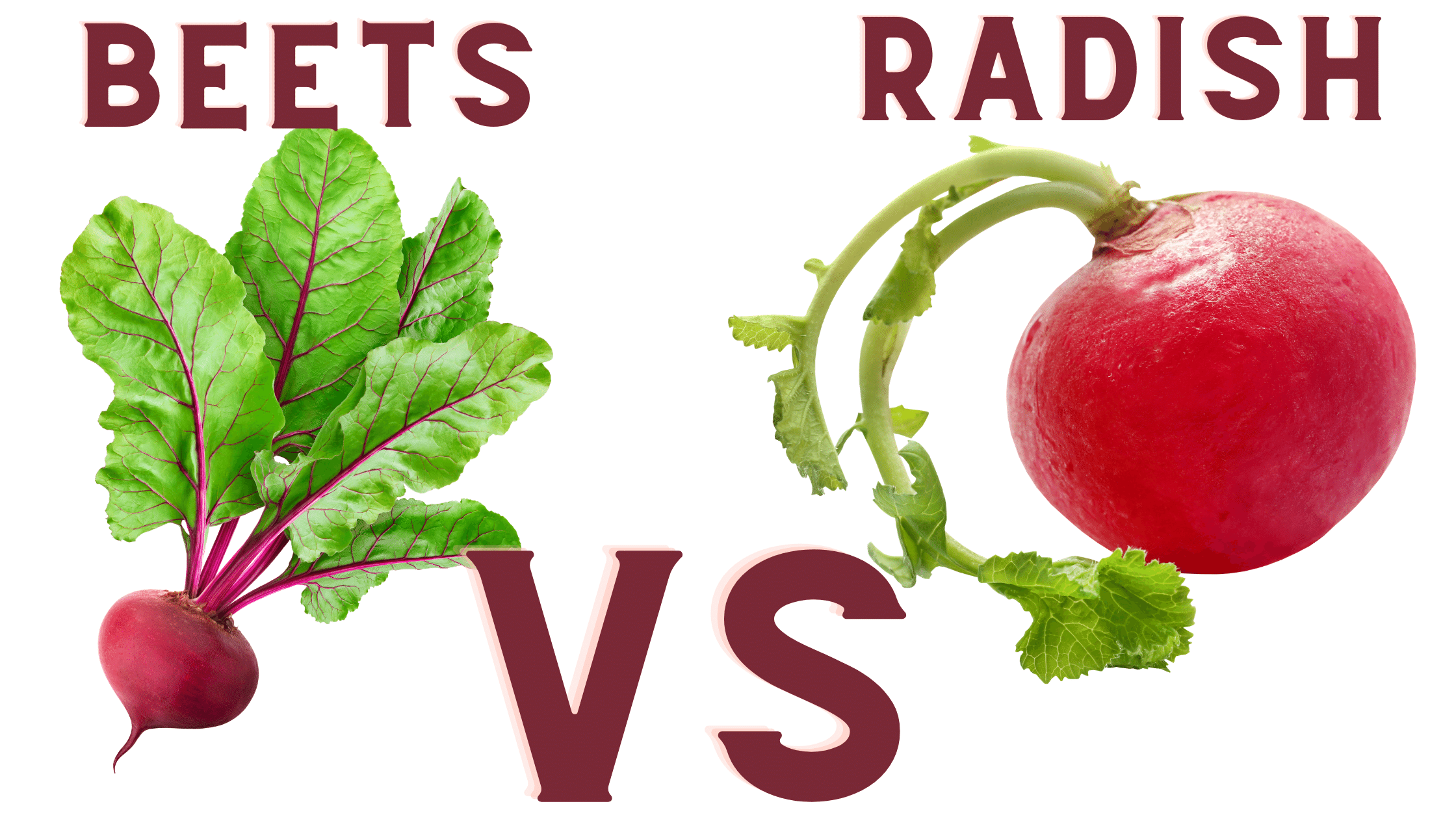Beets And Radishes: The Perfect Companion Planting Pair
Beetroot and Radish: The Perfect Companion Planting Pair
Beets and radishes are two popular root vegetables that are often grown together in the garden. They have similar growing requirements and can help each other to thrive. Beets are a cool-season crop that prefers full sun and well-drained soil. Radishes are also a cool-season crop, but they can tolerate a bit more shade. Both beets and radishes are relatively easy to grow and can be harvested in a short amount of time.
Benefits of Companion Planting
There are many benefits to companion planting, including:
- Attracting beneficial insects: Some companion plants attract beneficial insects, such as ladybugs and lacewings, which help to control pests. For example, radishes attract hoverflies, which are a natural predator of aphids.
- Repelling pests: Other companion plants can help to repel pests. For example, beets can help to repel cabbage moths and other insect pests.
- Improving soil quality: Some companion plants can help to improve the soil quality, making it more nutrient-rich and easier for plants to grow. For example, beets add nitrogen to the soil, which can benefit other plants.
- Disguising plants: Some companion plants can help to disguise other plants, making them less attractive to pests. For example, radishes can help to disguise beet seedlings, making them less likely to be eaten by slugs and snails.
How Beets and Radishes Benefit Each Other
Beetroot and radishes can benefit each other in a number of ways. For example:
- Radishes help to loosen the soil: Radishes have a long taproot that helps to loosen the soil. This can benefit beetroots, which have a shallower root system. Looser soil allows beetroots to grow more easily and develop larger roots.
- Beetroots help to deter pests: Beetroots can help to deter pests, such as cabbage moths and other insect pests. This can benefit radishes, which are more susceptible to pests.
- Radishes are a fast-growing crop: Radishes are a fast-growing crop, so they can be harvested relatively quickly. This can give you more space in your garden for other plants, such as beetroots.
- Beetroots are a long-season crop: Beetroots are a long-season crop, so they can be harvested over a longer period of time. This can help to extend your harvest season and provide you with fresh vegetables throughout the year.
How to Plant Beets and Radishes Together
To plant beets and radishes together, simply sow the seeds in the same row. Radish seeds should be sown first, as they will germinate more quickly than beet seeds. Once the radishes have germinated, you can sow the beet seeds directly on top of them. The radishes will help to mark the row for you and will also loosen the soil for the beetroots.
When to Harvest Beets and Radishes
Radishes can be harvested as soon as they are about 2 inches in diameter. Beetroots can be harvested when they are about 2 inches in diameter, but they can also be harvested when they are larger.
Conclusion
Beetroot and radishes are a perfect companion planting pair. They have similar growing requirements and can help each other to thrive. If you are looking for two easy-to-grow vegetables to add to your garden, beets and radishes are a great option.
Beets and radishes are two cool-season crops that are often planted together in the garden. They have different growth rates, which can make them ideal companions. Radishes grow quickly and are ready to harvest in about 2 weeks, while beets take a bit longer, about 4-6 weeks. This means that you can harvest the radishes first and then let the beets continue to grow.
Radishes also help to loosen the soil, which can benefit the beets. Their roots grow deep, which helps to aerate the soil and improve drainage. This can help to prevent the beets from developing root rot.
In addition, radishes can help to attract beneficial insects to the garden. These insects can help to control pests that can damage beets, such as aphids and flea beetles.
If you're interested in learning more about companion planting with beets and radishes, I recommend visiting Gardenia Inspiration. This website has a wealth of information on the topic, including planting tips, pest control advice, and recipes for using beets and radishes in the kitchen.
FAQ of beets and radishes companion planting
- Can I plant radishes and beets together?
Yes, radishes and beets can be planted together. In fact, they are often recommended as companion plants because they have different growth habits that complement each other. Radishes grow quickly and are harvested early, so they will not compete with beets for space or nutrients. The roots of radishes also help to loosen the soil, which can benefit the beet roots as they develop.
- What are the benefits of companion planting beets and radishes?
There are several benefits to companion planting beets and radishes. First, as mentioned above, radishes grow quickly and are harvested early, so they can provide a second crop in the same space. Second, the roots of radishes help to loosen the soil, which can improve drainage and aeration. This can benefit the beet roots as they develop. Third, radishes can help to deter pests from beets. For example, radishes emit a scent that repels aphids, which are a common pest of beets.
- What are the spacing requirements for planting beets and radishes together?
Radishes should be planted about 1 inch apart, and beets should be planted about 2 inches apart. If you are planting both radishes and beets in the same row, you should space them about 4 inches apart. This will give each plant enough room to grow without competing for space or nutrients.
- When should I plant beets and radishes together?
Radishes and beets can be planted in the spring or fall. They prefer cool weather, so it is best to plant them when the soil temperature is at least 40 degrees Fahrenheit.
- How do I care for beets and radishes that are planted together?
Beet and radish plants need full sun and well-drained soil. They should be watered regularly, especially during hot weather. You may need to thin the plants once they have germinated to give them enough space to grow.
Image of beets and radishes companion planting
Here are 5 different images of "beets and radishes companion planting" from Pinterest:
- Image 1: A diagram showing how radishes and beets can be companion planted together. The radishes are planted in the front, as they will mature quickly and be harvested before the beets. The beets are planted in the back, as they will take longer to mature.

- Image 2: A photo of a garden bed with radishes and beets planted together. The radishes are already starting to sprout, while the beets are still small.

- Image 3: A photo of a radish and beet plant growing next to each other. The radish plant is taller and has more leaves, while the beet plant is shorter and has fewer leaves.

- Image 4: A photo of a radish and beet flower blooming. The radish flower is white, while the beet flower is red.

- Image 5: A photo of a harvest of radishes and beets. The radishes are red and white, while the beets are yellow and orange.
Post a Comment for "Beets And Radishes: The Perfect Companion Planting Pair"